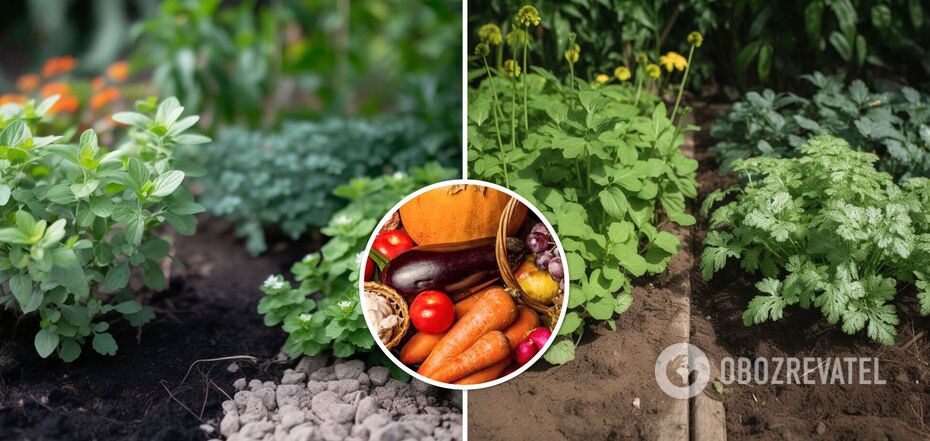Life
Which plants should not be planted next to each other in the garden: the most dangerous options
The right companionship is the key to a bountiful and tasty harvest. Experienced gardeners know that by planting crops in the right place in the garden, you can not only increase fertility but also improve plant development, simplify fertilization, care, and watering.
For example, it's better not to plant cauliflower, broccoli, or kohlrabi near tomatoes. Sweet peppers and legumes share a common disease called anthracnose, so they can infect each other with this type of fungus. Read about dangerous neighborhood options in the garden in the OBOZREVATEL article.
Consequences of improper companionship
Improper companionship increases the likelihood of infection with fungal diseases and pests because differences in watering regimes will lead to waterlogging of certain plants.
In addition, the growth and general condition of the crops are impaired, and yield and quality are reduced. You should also pay attention to soil acidity requirements and fruit ripening time. It is better to divide the garden into different areas: plant herbs and greens at the edges, and cabbage, peppers, tomatoes, and other vegetables that take a long time to ripen in the middle.
Gardeners do not recommend planting a crop twice in one place. Alternation should be done depending on the type of root system.
Examples of bad companionships
Tomatoes and cucumbers, peas, fennel, potatoes, cabbage
While potatoes and tomatoes are commonly planted together, both crops can develop late blight disease. Tomatoes should not be planted next to cucumbers, peas, fennel, and cabbage. Corn, turnips, and grapes make good neighbors.
Carrots and parsley, dill, horseradish
Carrots planted near parsley, dill, and horseradish may acquire an unpleasant bitter taste. It is also not recommended to plant carrots in a bed with beets. Carrots love light, so they should not be sown in the shade of trees.
Cucumbers and tomatoes, radishes, potatoes
Cucumbers do not thrive near spicy herbs, which can negatively affect their growth. Cucumbers should not be planted near tomatoes, potatoes, and radishes. Additionally, melons can impart an unpleasant flavor to cucumbers due to over-pollination.
Where to plant beets
Beets should not be planted near potatoes, mustard, spinach, beans, and corn.
Companionship for garlic
Garlic acts as an excellent garden sanitizer because its sulfurous secretions prevent the development of fungal diseases. The only bad companion for garlic is raspberry bushes. Also, if possible, it is better not to plant it next to peas and beans.
Salad crops
Beets do not fare well near salad crops. Parsley and mustard should also be planted farther away.
Cabbage and carrots, parsley, tomatoes, beans
Cabbage will grow poorly next to grapes, carrots, parsley, strawberries, and beans. Cabbage and tomatoes inhibit each other's growth.
Where to plant onions
Experienced gardeners advise planting onions away from beans, peas, parsnips, dill, cabbage, and beets.
Dill and spinach
Asparagus, zucchini, celery, and beets are not the best companions for spinach. And parsley and onions are not recommended for planting next to dill.
Companionship for peppers
Bell peppers have good companions in cucumbers, greens, legumes, and onions. However, peppers should not be planted near potatoes and beets.
Pumpkins and zucchini
Late cabbage, as well as tomatoes and carrots, negatively impact pumpkins. But zucchini is a very "friendly" vegetable and gets along well with almost all neighbors in the garden, with the exception of cucumbers and potatoes.
Wrong companionship for trees
Apple trees should not be planted near cherries, peaches, lilacs, or jasmine.
Cherries will not produce well near raspberries, apricots, and black currants, while cherries and plums will be good companions.
Peaches will not yield a generous harvest near pears and apple trees. And cherries are not recommended for planting next to peaches.
Speaking of apricot incompatibility, it is worth mentioning apple, plum, and cherry trees. And it is better not to plant a pear next to shrubs.
Subscribe to OBOZREVATEL's Telegram and Viber channels to keep up with the latest developments.



























